How to Winterize Your Home: A Complete Checklist
Last winter, 23% of homeowners faced frozen pipes or heating failures—repairs averaging $5,000. Here's the kicker: every single incident was preventable with proper home winterization. The difference between a cozy winter and a costly disaster? About one weekend of preparation and knowing exactly what to tackle first.
Home winterization isn’t just about preventing damage—it’s also one of the smartest ways to save on energy bills, keeping your home warmer while lowering costs. We're breaking down every winterization task that actually matters, from the obvious to the often-forgotten.
Ready to lock out the cold and lock in savings? Let's turn your home into a fortress against winter—starting with the tasks that matter most.

Recommended Home Winterizing Products
The right products make winterization easier and more effective. Preparing in advance can make the process go smoothly and help save time later. Here's what actually prevents frozen water pipes and keeps your house warm without breaking the budget.
🛠️ Essential Winterization Arsenal
| Product | Cost | Saves You | Priority |
| Water pipe insulation foam | $30-50 | Up to $5,000 in extreme water damage and pipe repairs | Critical |
| Smart thermostat | $150-250 | 20% on heating bill | High |
| Weather stripping kit | $50-75 | 10~20% on energy bills | High |
| Door sweeps | $15-30 | 2-5% on heating | High |
| Gutter guards (Prevents ice dams) | $100-200 | Up to $1000 in roof damage repair | Medium |
‼️ Emergency supplies for winter storms:
-
Extra batteries for flashlights
-
Bottled water (1 gallon per person/day)
-
Space heater with auto-shutoff
-
Heated blankets for warmth
Don't forget to use foam to insulate pipes in unheated areas. This $2-per-foot investment prevents costly water damage when freezing temperatures hit.
Quick Wins That Matter Most
Preventing cold air infiltration saves more money than any fancy heating system upgrade. Start by feeling for drafts around doors and windows on the next windy day—your hand is the cheapest detection tool you own.
Here are several simple steps that deliver big savings fast:
-
Seal drafts first: Add weather stripping to exterior doors and door sweeps where warm air escapes at floor level. This $30 fix can cut your heating bill by 15%. Check where pipes enter exterior walls—these gaps let winter winds straight into your crawl spaces and reduce insulation effectiveness.
-
Smart layering beats cranking heat: Before temperatures drop, rearrange furniture away from exterior walls. Cold air radiates inward, making rooms feel colder than they are. Place bookshelves against outside walls as natural insulation.
-
Reverse ceiling fans clockwise: Push warm air back down into the room instead of letting it rise.
-
Replace detector batteries: Swap in fresh batteries for carbon monoxide detectors before the first cold snap—heating season raises CO risks.
-
Redirect your airflow: Close vents in unheated areas so warm air flows to the spaces you use most.
-
Upgrade to a smart thermostat: Optimize heating schedules automatically and reduce wasted energy when you’re not home.
Tips for Winterizing Your Home
Getting your home ready for winter is about more than just staying warm—it can help lower energy bills, prevent costly damage, and keep your family safe. Here are some practical tips to make sure your home is ready for the cold months ahead.
Inspect and Seal Your Home
Cold drafts are one of the biggest energy wasters in winter:
-
Walk around and check doors, windows, and attic vents for drafts and gaps.
-
Apply weatherstripping or caulk to seal leaks and prevent cold air infiltration.
-
Adding storm doors or thermal curtains provides an extra layer of insulation.
-
Inspect the roof and attic for damaged shingles, insulation gaps, or moisture damage.
-
Ensure chimney flues are closed when not in use to help avoid heat loss.
Winterize Your Home Plumbing
Frozen water pipes can burst and cause severe water damage:
-
Insulate exposed water pipes in the basements, attic, and garage using pipe insulation foam.
-
Disconnect, drain, and store outdoor hoses to prevent freezing.
-
Shut off exterior faucets before the first frost to avoid pipe bursts and water damage.
-
Locate and clearly label your main water shutoff valve for quick access during emergencies.
Prepare Heating Systems
Your heating system works hardest in winter, so it’s crucial to get it ready:
-
Schedule a professional HVAC inspection and cleaning.
-
Replace furnace or boiler filters for optimal efficiency.
-
Test and service fireplaces, chimneys, and wood stoves to help ensure safety.
-
Check thermostat functionality and consider upgrading to a programmable model.
Improve Home Insulation
Proper insulation keeps heat from escaping and helps reduce energy costs:
-
Add insulation to the attic, walls, and crawl spaces where needed.
-
Seal gaps around plumbing, electrical wiring, and ductwork.
-
Use draft stoppers on doors and windows to reduce heat loss.
-
Consider insulating floors above unheated spaces to make your home warmer.
Winterize the Exterior
The outside of your home needs attention, too:
-
Clean gutters and downspouts to prevent ice dams, which can lead to roof damage.
-
Consider installing gutter guards to reduce debris buildup and minimize maintenance.
-
Trim tree branches that could damage your roof or siding in storms.
-
Inspect and repair siding, roof flashing, and foundation cracks.
-
Apply exterior caulking around windows, doors, and vents to help seal gaps.
-
Store outdoor furniture, grills, and garden tools to protect them from snow and ice.
Safety Check
Winter brings additional safety concerns:
-
Test smoke and carbon monoxide detectors; replace batteries as needed.
-
Ensure fire extinguishers are accessible and fully charged.
-
Check emergency supplies: flashlights, blankets, and non-perishable food.
-
Keep de-icing salt, sand, or ice melt handy to prevent slips and falls on walkways and driveways.
-
Review family emergency plans for power outages or severe weather.
Energy Efficiency Upgrades (Optional)
If you want to go a step further, consider long-term upgrades:
-
Installing energy-efficient windows can reduce heat loss significantly.
-
Smart home devices, like thermostats and energy monitors, help you optimize energy use.
-
Adding a humidifier can also make your home feel warmer and prevent dry winter air from irritating skin and the respiratory system.
Home Winterization Checklist
This comprehensive guide ensures nothing gets missed. Tackle one section per day over a weekend for complete protection.
Exterior Checklist
□ Clean gutters and remove other debris to direct water away
□ Check roof for damaged shingles before melting snow finds weak spots
□ Trim dead branches that winter storms could send through windows
□ Seal cracks in walkways to prevent ice expansion damage
□ Store or cover patio furniture
Interior Protection
□ Test all detectors — smoke and carbon monoxide with fresh batteries
□ Change HVAC air filters (monthly during heating season)
□ Insulate pipes in crawl spaces and unheated areas
□ Add door sweeps to all exterior doors
□ Caulk gaps around windows to prevent drafts
Heating System
□ Schedule a professional furnace inspection for creosote buildup
□ Verify thermostat is working correctly
□ Bleed radiators if you have hot water heat
□ Clean heat registers and ensure they're unblocked
Emergency Prep
□ Locate water supply shutoff valve
□ Stock flashlights with extra batteries
□ Test backup heat sources are working properly
□ Program emergency numbers into phones
These key steps keep your home safe and energy efficient through winter weather.
When to Start Winterizing Your Home
Timing your winterization prevents the panic of frozen pipes during that first cold snap. The sweet spot? Start 4-6 weeks before your average first freeze date.
Your Winterization Timeline
Early Fall (September-October):
-
Schedule heating system maintenance
-
Clean gutters before leaves fall
-
Trim overhanging branches that could damage your roof
-
Weatherize outdoor furniture or store it
Mid-Fall (October-November):
-
Drain outdoor faucets properly
-
Add weather stripping while it's still comfortable outside
-
Replace air filters in your HVAC system
-
Install storm windows
Before First Freeze:
-
Disconnect and drain garden hoses
-
Insulate exposed pipes
-
Set programmable thermostat for winter schedule
-
Stock emergency supplies
Regional Considerations
Northern states should begin by Labor Day. Southern regions can wait until Halloween. Watch the forecast—when nighttime temperatures consistently drop below 45°F, it's time.
Vacant home alert: If your house will be unoccupied for even a weekend during cold months, winterize immediately. Avoid posting travel plans online—and set heat to 55°F minimum to prevent disasters while away.
How Much Does It Cost to Winterize a Home?
DIY winterization costs $200-500 for materials, while professional service runs $400-1,500 depending on home size. The investment pays back quickly—most homeowners save $800-1,200 on winter energy bills.
Cost Breakdown by Project
DIY Essentials ($200-300):
-
Weather stripping and caulk: $50-75
-
Pipe insulation: $30-50
-
Door sweeps: $15-30
-
Gutter cleaning tools: $30-40
-
Smart thermostat: $150-250
Professional Services:
-
HVAC inspection/tune-up: $125-200
-
Gutter cleaning: $150-300
-
Chimney inspection: $200-400
-
Full home weatherization: $400-800
Money-Saving Strategy
Focus on high-impact DIY projects first. Sealing air leaks yourself saves $200 in labor and cuts heat loss by 20%. Invest those savings in quality heating products like our Homlyns heated blankets—reducing whole-house heating needs.
Skip these overpriced services:
-
Window plastic installation ($300) — DIY for $30
-
Basic caulking service ($200) — DIY for $15
-
Thermostat programming ($75) — YouTube tutorial free
Remember: Preventing one frozen pipe saves $5,000 in repairs. That makes even professional winterization look cheap.
Ready to Stay Warm All Winter With Homlyns?
Winterizing your home isn't just about preventing disasters—it's about creating a cozy fortress against the cold. With these steps completed, you'll slash heating bills, prevent expensive repairs, and actually enjoy winter instead of dreading it. The best part? Most tasks take just one weekend.
Key takeaways:
-
Start winterizing 4-6 weeks before the first freeze
-
Focus on sealing air leaks first (best ROI)
-
DIY basics cost $200-500, save $800-1,200
-
Keep vacant homes at 55°F minimum
-
Insulate pipes in all unheated spaces
Once you've sealed out drafts and protected your pipes, maximize comfort with targeted warmth. Our Homlyns heated mattress pads and heating blankets let you lower that thermostat at night while staying perfectly cozy. Why heat empty rooms when you can create personal comfort zones? Plus, with 10 heat settings and auto-shutoff, you'll save on energy bills all winter long.
FAQs
How do you close up your house for winter?
If your house will be unoccupied during the winter months, follow this shutdown sequence: Set thermostat to 55°F minimum (never completely off). Shut off the main water supply and drain properly by opening all faucets. Flush toilets and pour antifreeze in drains and toilet bowls.
Essential steps:
-
Unplug appliances except refrigerator/freezer
-
Clean out perishables
-
Switch to LED light bulbs on timers for security
-
Lock all windows where heat escapes
-
Ask a neighbor to check after storms
Never turn the heat completely off—frozen water pipes cost more than a winter season of minimal heating.
What temperature should you winterize your house at?
Start winterizing when nighttime temperatures consistently hit 45°F. This gives you buffer time before freezing threatens pipes, especially those in vulnerable areas.
Temperature guidelines:
-
Occupied homes: Keep at 68°F day, 60°F night to save money
-
Vacant properties: Maintain 55°F minimum
-
Crawl spaces/basements: Never below 40°F
-
Water heater setting: Lower to 120°F for efficiency
For maximum comfort without waste, pair lower thermostat settings with our Homlyns heated bedding. You'll keep your home cozy at night while reducing heating costs by 10-15%.




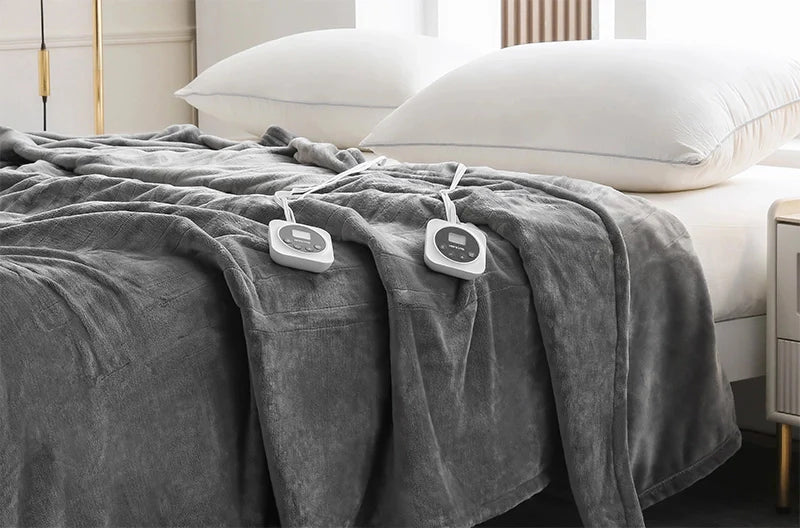
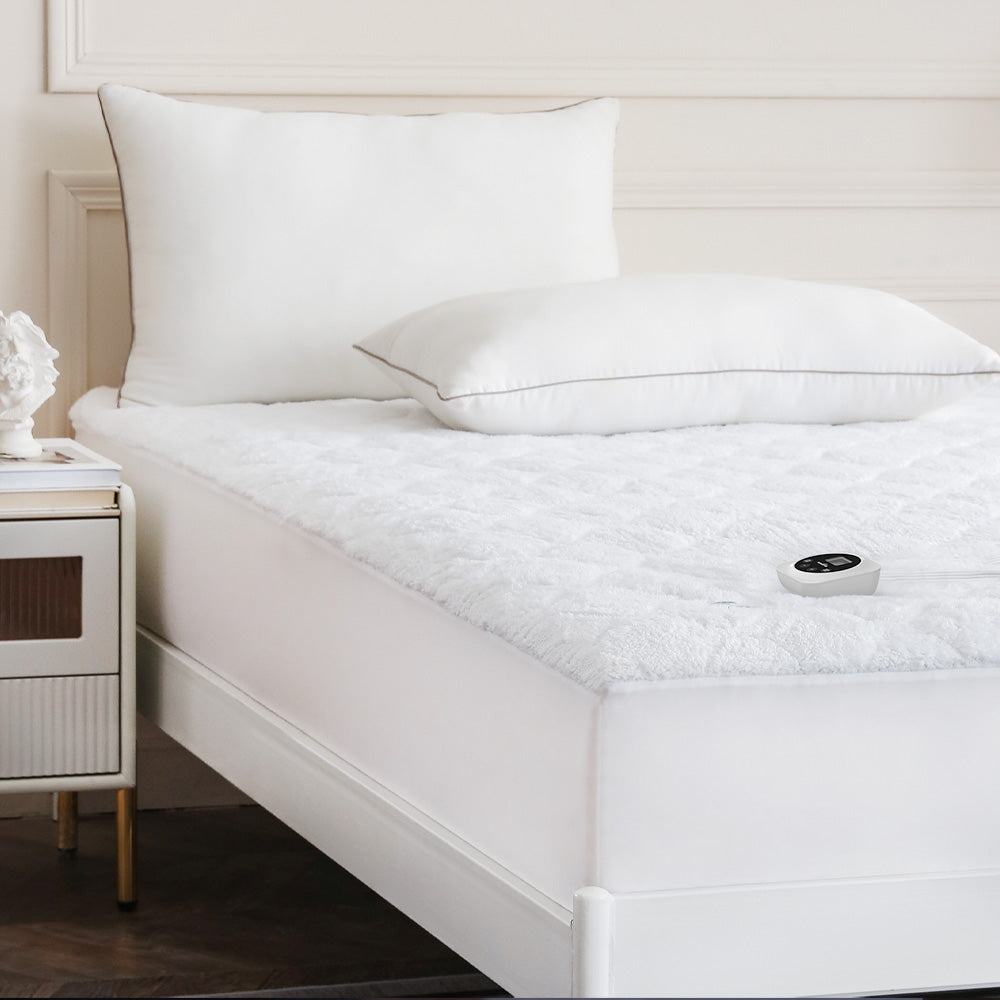
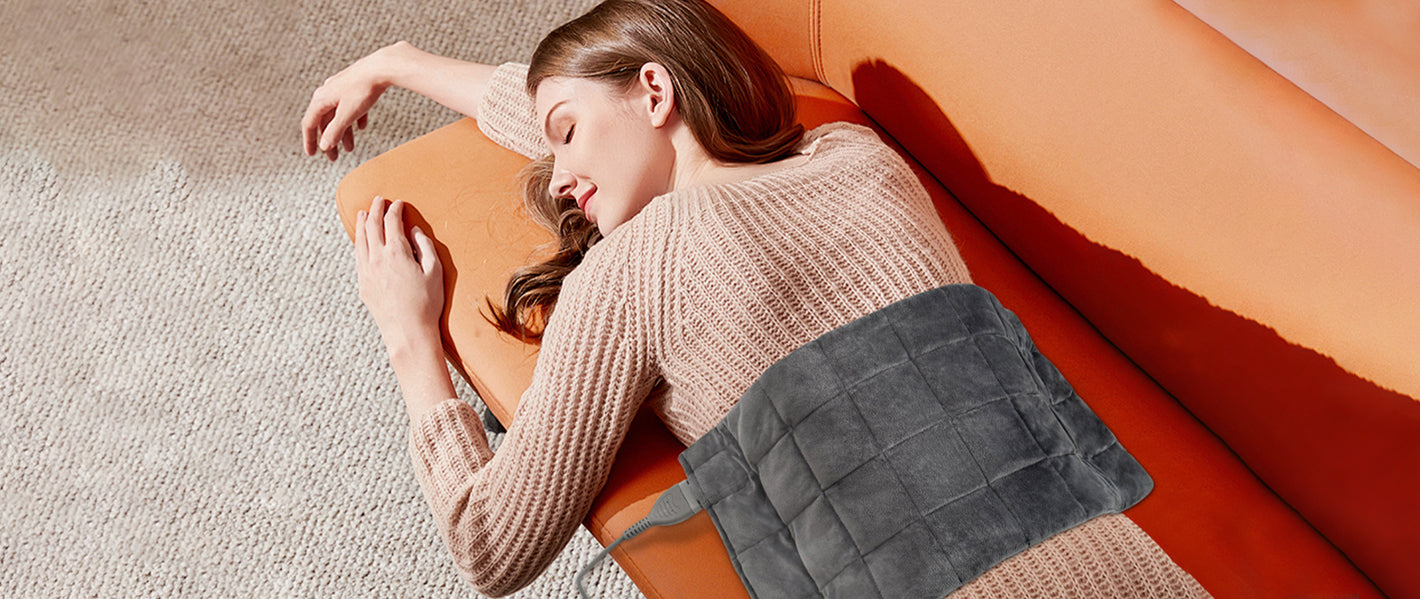
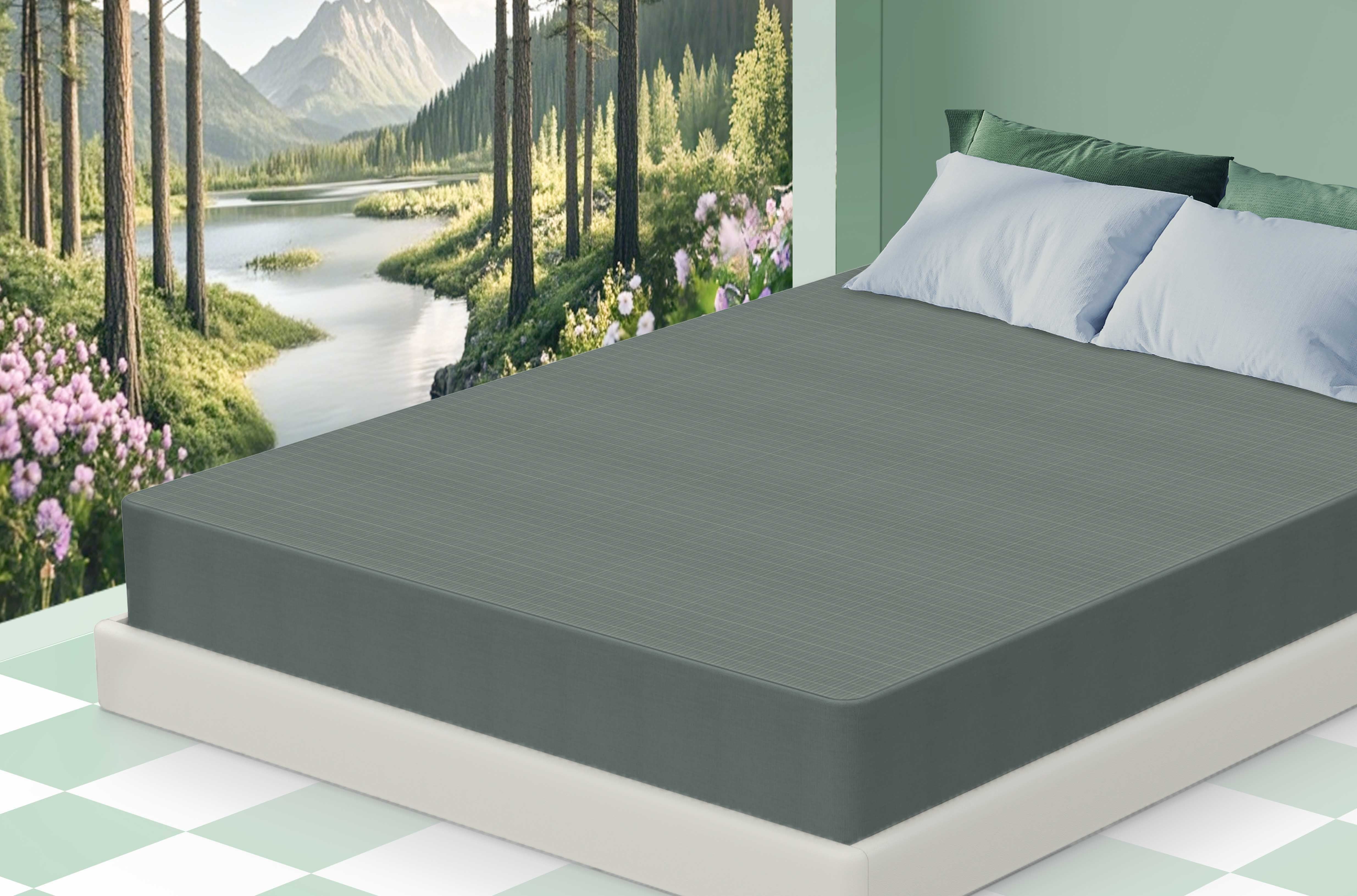

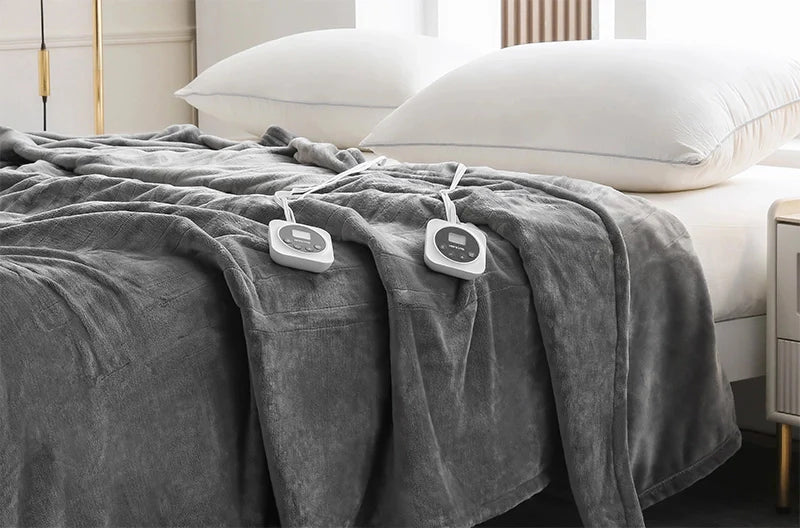
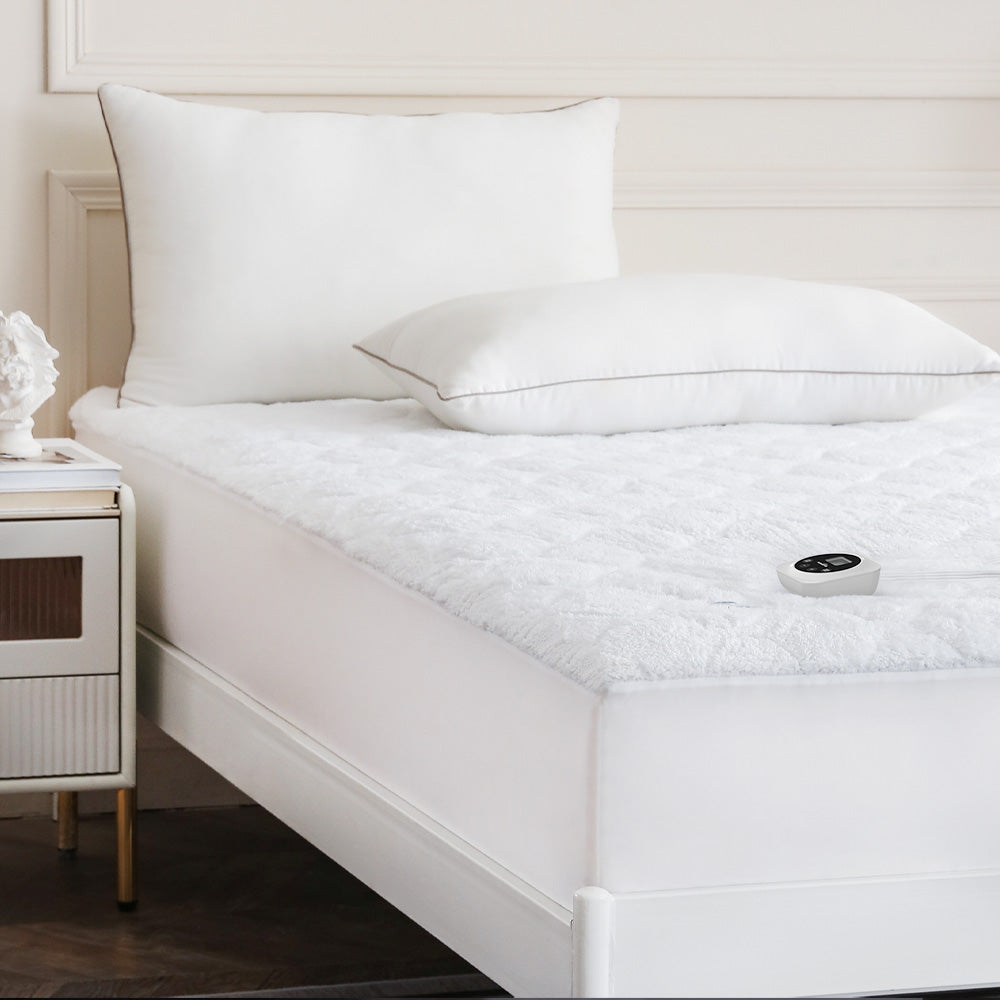
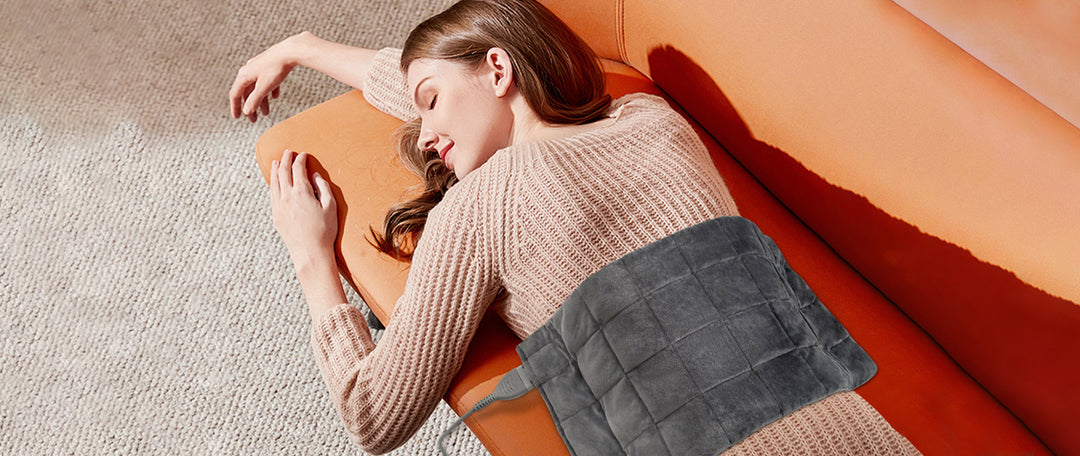
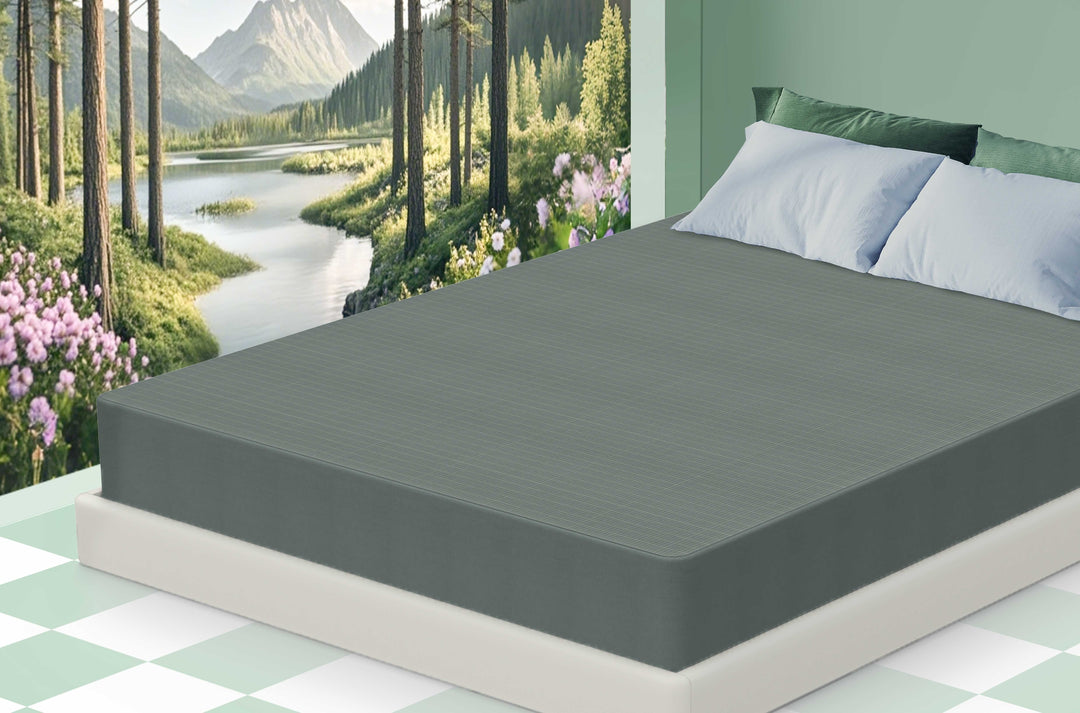



Leave a comment